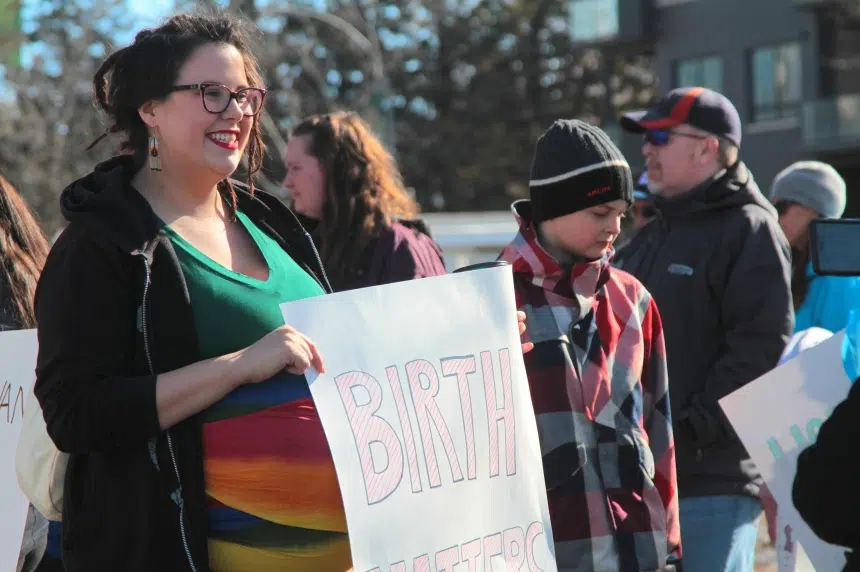Saskatchewan families rallied in five cities Saturday to draw awareness to the province’s lack of midwifery services.
In Saskatoon, mothers and fathers with children in arm waved signs outside the Royal University Hospital.
Simultaneous rallies were also held in Prince Albert, North Battleford, Regina and Swift Current.
“They simply don’t have enough,” rally organizer Samantha Buller-Kormos said. “If half the women are turned away seeking midwifery care for one of the most vulnerable times in the life, that’s not cool.”
Buller-Kormos said she was fortunate to have a widwife with her when she gave birth to her daughter, but with only 11 midwives in three of the 13 provincial health regions and one First Nations hospital, many of her friends are stuck on long wait lists, often giving birth before they get to see a midwife. This prompted her to start the Facebook group Saskatchewan Needs More Midwives and to organize rallies.
“It’s frustrating. You’re seeking a care professional that you want and you’re being denied just because the wait list is too long,” she said.
Midwives provide care during and six months after pregnancy, assist with delivery and can prescribe and administer many common pregnancy-related drugs.
Midwifery first became legal in Saskatchewan in 1999 with the passing of the Midwifery Act. To practice in the province, midwives must be approved by the Saskatchewan College of Midwives.
However, Saskatchewan does not have its own midwifery schooling programs, so aspiring midwives must leave the province to learn the skills. If and when they return, midwives can either be employed by a tax-funded health region or open their own private practice and charge clients for services.
Midwives remain in high demand across the country.
There are currently spots for up to 15 tax-funded midwives between Saskatoon, Regina Qu’Appelle, and Cypress. The province dedicated $2.2 million towards midwife services in the 2015-2016 budget.
Buller-Kormos would like to see more funding and education programs for Saskatchewan midwives.
However as spots sit vacant, expectant families go without midwives. Virginia Haron was six weeks pregnant when she began searching for a midwife, but had to sit on a wait list until she was 30 weeks.
“It was devastating to call every week and be told no, no, no, you’ll have to birth in the hospital,” Haron said. “I wish it was clear cut and every woman who wanted a midwife could have one, even ones with risk factors.”
Haron would like to have see more education about midwifery to dispel misconceptions about the practice and encourage more people to take up the practice.
“I think just people knowing midwives exist and it’s not just some crazy witchcraft; they’re actual medical professionals,” she said, adding many parents don’t know health region midwife fees are covered by tax dollars.
Others such as Jasmyn Marshall, who will deliver her second child with the help of midwives, would like to have more options for mothers.
“I’m hoping it opens more spots, maybe a birthing centre. Even privatizing wouldn’t be bad,” she said.
Buller-Kormos said her experience with midwives made for a pleasant birth and she wants other women to have the option available to them.
“The kind of care that I received, I really want that for everybody,” she said.











